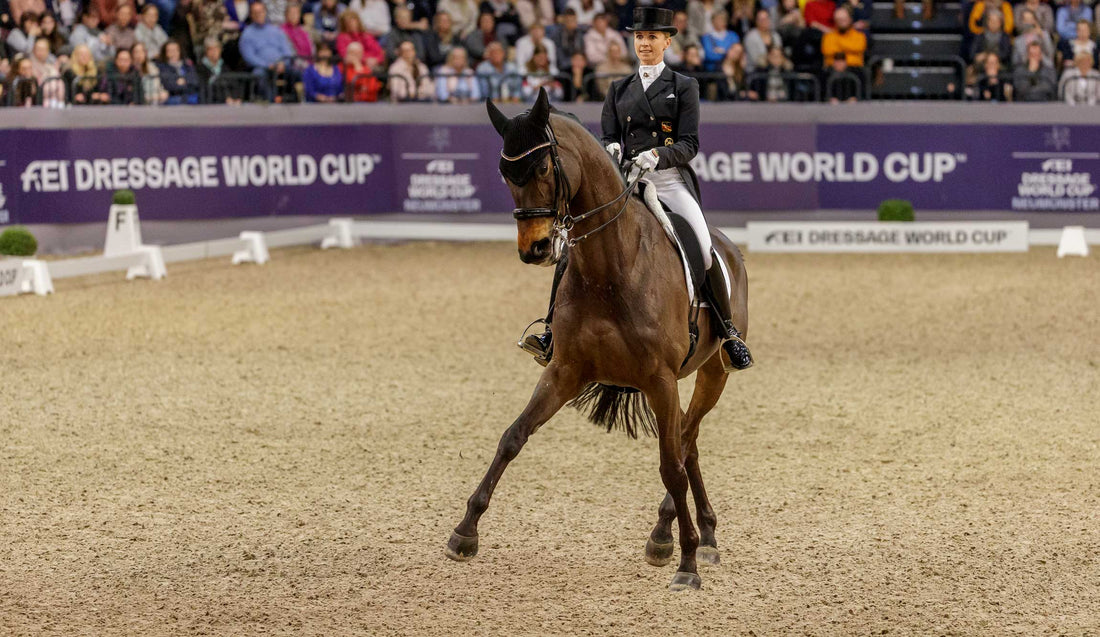Mastering Side Movements: Unlocking Your Horse’s Potential
When it comes to creating a well-rounded, balanced horse, side movements are one of the most valuable tools in your training toolkit. They’re not just about fancy maneuvers to impress a crowd—they’re about building suppleness, responsiveness, and a deeper connection between you and your horse. Here’s why side movements, including haunches-in, are so important and how to start incorporating them into your rides.
Why Side Movements Matter
Side movements, like leg-yields, shoulder-ins, haunches-ins, and half-passes, do more than look elegant. They serve critical purposes in training:
- Improve Balance and Coordination: Asking your horse to move laterally helps them develop better balance and coordination. It teaches them to carry weight on their hindquarters and stay light on the forehand.
- Build Suppleness: Horses that can stretch laterally are more flexible, making them less prone to stiffness or injury. This is especially important for disciplines like dressage, jumping, or trail riding.
- Enhance Responsiveness: Asking for precise movements sharpens your horse’s ability to respond to subtle cues, making them more tuned in to your aids.
- Boost Strength and Engagement: Lateral work requires your horse to engage their core and hindquarters, building strength in the right places for more powerful, collected movement.
Starting with the Basics
If you’re new to side movements, the key is to keep it simple. Start with exercises that are easy for your horse to understand and execute.
1. Leg-Yield
The leg-yield is one of the simplest lateral movements and a great place to begin. Your horse moves forward and sideways at the same time, with a slight bend away from the direction of travel.
- How to Ask: Ride in a straight line and apply gentle pressure with your inside leg behind the girth, encouraging the horse to step sideways. Maintain light contact with your outside rein to guide them.
- Common Mistakes: Avoid over-pressuring, which can cause the horse to overbend or lose forward motion. Focus on keeping their body straight and the movement rhythmic.
2. Shoulder-In
This movement helps improve flexibility and balance by asking the horse to travel with their shoulders slightly inside the track.
- How to Ask: On a straight line or circle, use your inside rein to bring the horse’s shoulder in while maintaining light contact with the outside rein. Use your inside leg to keep forward momentum.
- Tip: Practice on a large circle first to help the horse find the correct positioning without feeling confined.
Adding Haunches-In (Travers)
Haunches-in, also known as travers, takes lateral work a step further by teaching the horse to move with their haunches slightly inside the track while keeping their shoulders on the track. It’s an excellent exercise for building hindquarter strength and engagement.
-
How to Ask:
- Begin on a straight line or a circle.
- Apply your outside leg slightly behind the girth to guide the haunches inward.
- Keep a steady contact with your inside rein for bend and use your inside leg at the girth to maintain forward energy.
- Benefits: Haunches-in helps the horse engage their hindquarters more effectively, which is crucial for collection and advanced movements like pirouettes and half-passes.
- Common Challenges: Riders often overdo the bend or lose forward motion. Focus on maintaining a subtle angle and fluid movement.
Moving Up: The Half-Pass
Once your horse is comfortable with leg-yields, shoulder-ins, and haunches-ins, you can progress to the more advanced half-pass. This movement requires the horse to travel both sideways and forward with a bend in the direction of travel.
- Why It’s Challenging: The half-pass demands more collection and strength from the horse, as well as precise coordination from the rider. It’s a true test of partnership.
- How to Practice: Start on a diagonal line, asking for slight lateral movement while maintaining a forward gait. Focus on keeping the horse’s body aligned with the direction of travel.
Common Pitfalls and How to Avoid Them
- Rushing Through Movements: Side movements require patience. If your horse rushes or loses balance, take a step back to simpler exercises.
- Overusing the Reins: Many riders fall into the trap of pulling the horse into position with the reins. Instead, focus on guiding with your seat and legs while keeping the reins soft and steady.
- Ignoring Forward Motion: Lateral movements should always include forward energy. Without it, the movement becomes stiff and mechanical.
Side Movements for All Disciplines
Whether you’re a dressage enthusiast or a trail-riding adventurer, lateral work has a place in your training routine. It creates a more athletic, responsive horse capable of tackling any challenge. For trail riders, side movements can be invaluable for navigating tight spaces, gates, or tricky terrain. For competitive riders, they build the foundation for advanced maneuvers and enhance performance in the arena.
Final Thoughts
Mastering side movements takes time, but the rewards are well worth the effort. They’re not just about teaching your horse new tricks—they’re about creating a stronger partnership and helping your horse reach their full potential. Start small, stay consistent, and celebrate every bit of progress.
Your horse will thank you for it—and so will your future self when you’re gliding through haunches-in like a pro!

